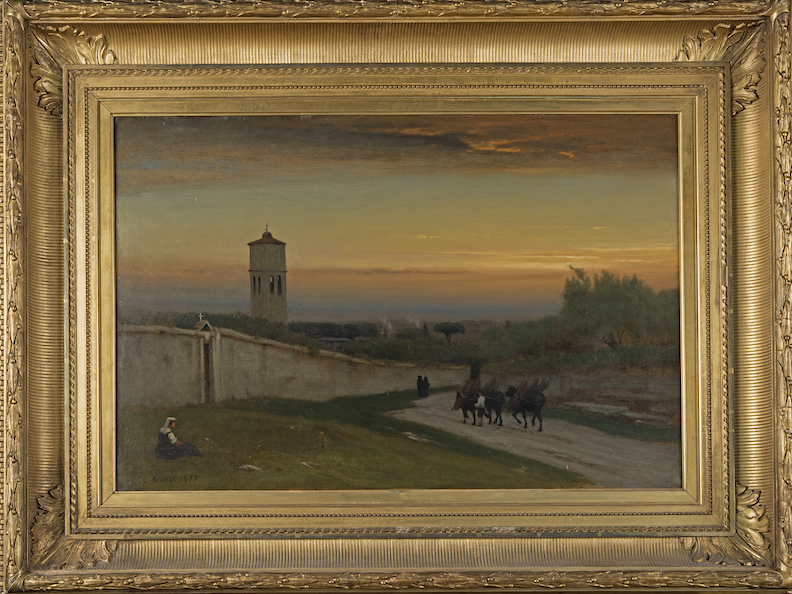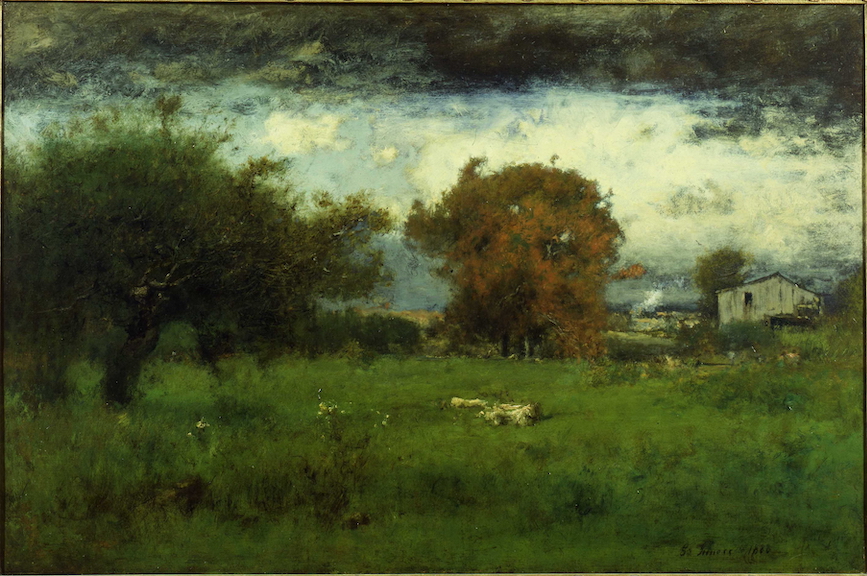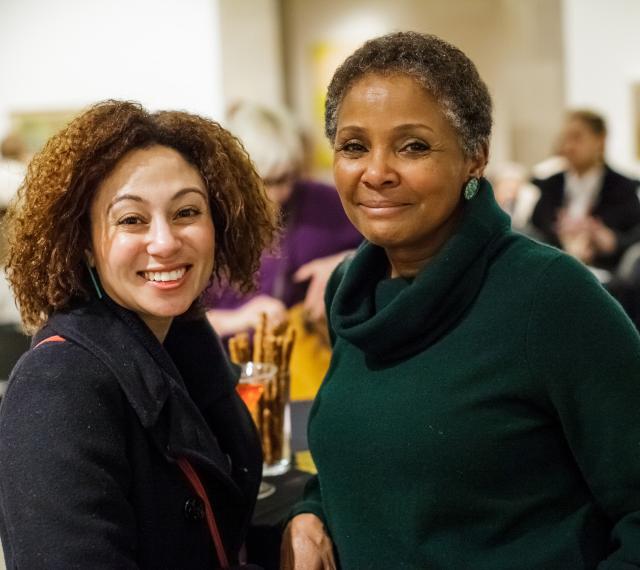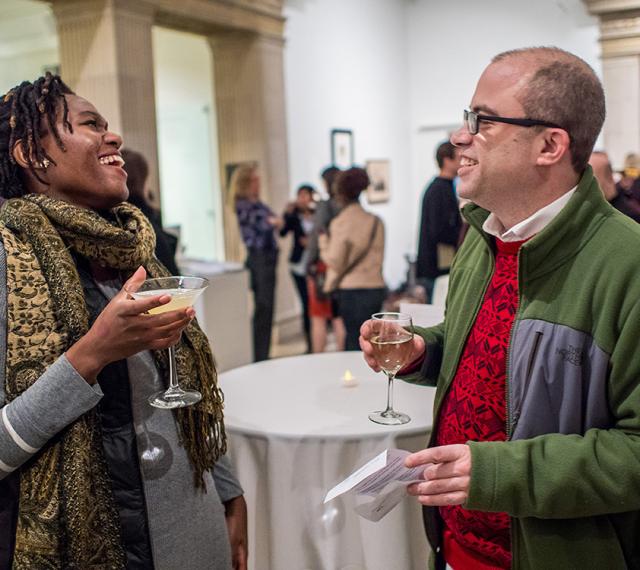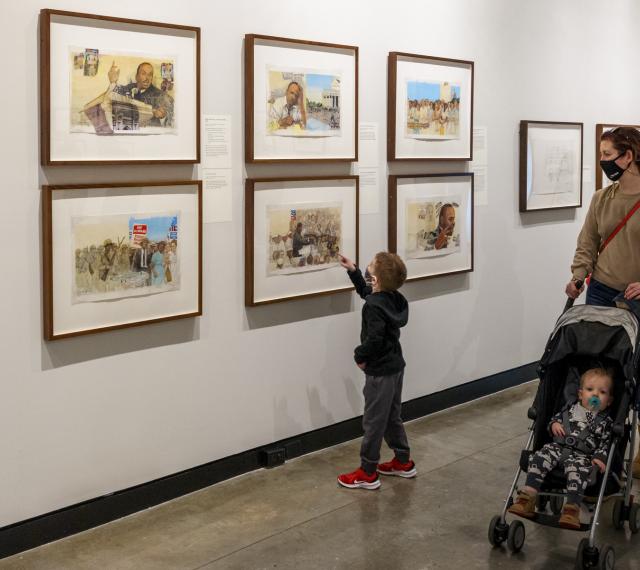George Inness (1825-1894) is universally acclaimed as a grand, lyrical master of late 19th century painting. Regarded by his contemporaries as America’s foremost landscape artist, Inness was inspired by the natural beauty of Montclair, where he resided from 1885 to 1894. Featuring a major recent acquisition, Twilight (1875), this installation is based on works selected from the Montclair Art Museum’s comprehensive collection of more than 20 paintings and works on paper. Every important period of Inness’ career is represented in this exhibition, from his earliest, more realist work of the 1840s, rooted in European landscape conventions, to his final, more abstract expressions of his belief in the total unity of material and spiritual existence.
Inness’ works on view are loosely arranged to reflect the daily natural cycle from daylight to sunset and moonrise. The sunset paintings typify his many interpretations of this favored subject—a transitional time of unity when the sun, emanating from God, is poised between heaven and earth. All distinguishing characteristics of the landscapes are softened by the celestial orange glow and thick atmosphere—a subtle, unifying spiritual essence.
Inness was a follower of the Christian sect of Swedenborgianism, believing that natural forms were manifestations of the divine. According to the teachings of the Swedish scientist-mystic Emmanuel Swedenborg (1688-1772), God speaks to humanity through the natural world. Inness referred to this spiritual dimension as “the reality of the unseen.” A master of essentials, he felt that a literal copying of nature would record only its transitory and fragmentary aspects. Inness therefore evolved a harmonious, eternal style of broad, expressive brushwork that unifies all aspects of the pictorial composition.
Gail Stavitsky
Chief Curator
Read about George Inness and MAM’s new installation in this recent Wall Street Journal Review.
A gift of Frank and Katherine Martucci, the George Inness gallery opened on November 18th, 2001.
George Inness: Visionary Landscapes is made possible with generous support from the Lyn and Glenn Reiter Endowed Special Exhibition Fund, The Mr. and Mrs. Raymond Horowitz 19th and 20th Century Fund for American Art, the Susan V. Bershad Charitable Fund, Lisa and Joseph Amato, Cynthia Corhan-Aitken and Murray Aitken, Patti and Jimmy Elliott, Tracy Higgins and James Leitner, Toni LeQuire-Schott and Newton B. Schott, Jr., Christine James and Nick DeToustain, Robert L. Tortoriello, Margo and Frank Walter, and Joan and Donald Zief.
All Museum programs are made possible, in part, by the New Jersey State Council on the Arts, a Partner Agency of the National Endowment for the Arts, Carol and Terry Wall/The Vance Wall Foundation, the Geraldine R. Dodge Foundation, and Museum members.

